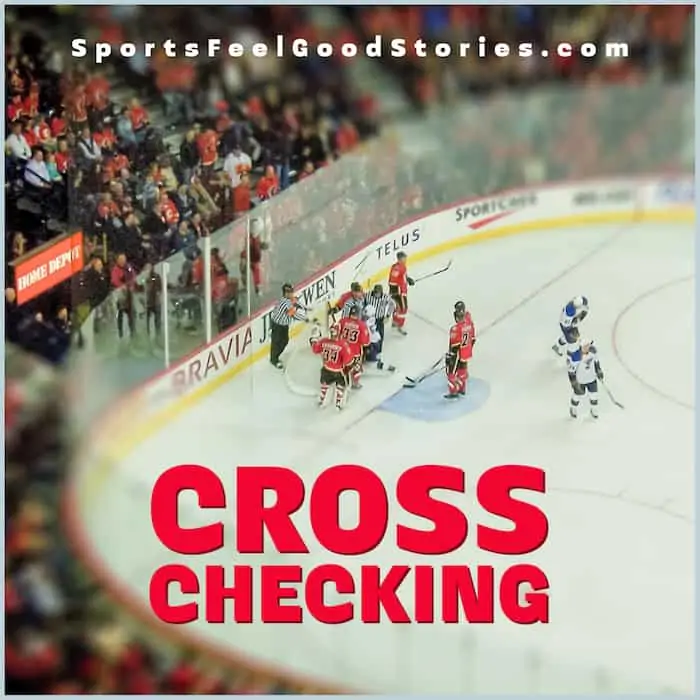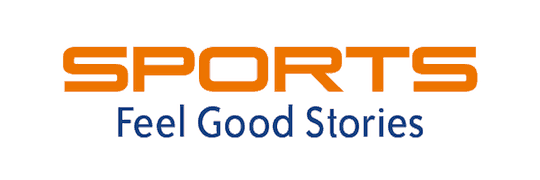What is cross-checking in hockey?
To play hockey, at least at the NHL level, requires some aggressive play. Every player is fighting for the puck. After all, you can’t win the game if you can’t get it in the net. But to gain the puck, sometimes stickhandling isn’t enough.
Cross-Checking Definition
Officially, cross-checking in hockey is the act of using the shaft of a stick between two hands to forcefully check an opponent where no portion of the stick is on the ice. But it is a fine line between what is considered an infraction compared to what is legal checking. Let’s look at both in more detail.
Key Takeaways
1.) Illegal cross-checking involves a player using the shaft of their stick against an opponent.
2.) Legal checking can include both a hip check and a shoulder check.
A legal hit can be considered illegal if the instigator’s skates come off the ice.
3.) The penalty is typically a minor but can be a major or more if there is a greater intention and it results in an injury.
4.) Cross-checking is allowed in the NHL and is typically above the age of 14 in other leagues. Women are not allowed to cross-check.

What is Legal Checking?
As I previously mentioned, hockey can get rough, and when watching a game, you will see a lot of checking among the players. A player will deliberately make physical contact with another to stop him from getting the puck or to slow him down.
But to not get penalized, the player must consider the aggression behind his check and its timing. Too much, and they will get a penalty; too late, such as after the play, and this, too, will result in a penalty. Not to mention that the puck has to be in close range of the player being checked.
Some players see it as a form of art; there is a right way to do it. A hip check is typically done along the boards and requires the player to bend low to gain a good angle. A shoulder check requires that the elbow be tucked in not to hit his opponent’s head.
Check out these tips from hockey player Dustin Brown about how to do a legal check correctly. Note how he mentions timing as a big part of proper legal checking.
Check out Hockey Parents Tips.
All You Need to Know About Checking Video
You might also notice that in no part was his stick used. But while you may think that a cross-check with the use of a stick is grounds for an automatic penalty, that isn’t always the case. As we have discovered in other topics, referees get to use their discretion when making a decision.
And since hockey players are known for pushing the boundaries of what is and what isn’t considered legal, a little rough-housing isn’t necessarily a crime. You will often see them pushing against one another, even with their sticks in their hands, in front of the net, vying for a good position.
See The Incomparable Doc Emrick.
What Are the Penalties for Cross-Checking?
Generally, a minor penalty of two minutes is given to the player who cross-checked his opponent. If a player is injured, a major penalty of five minutes can be allotted to the offending player. In some cases, game misconduct or match penalty can occur.
These more extreme cases often happen when a player decides to check another player who wasn’t even within proximity of the puck. To see what I mean, let’s take a look at some of these big checks that have happened in different NHL games. You will also notice that these players are distinctly using their sticks and not just their bodies.
Another distinguishing feature from a legal check to an illegal one is if the player’s skates leave the ice. That means that even if the play seems legal on all other accounts, it’s still illegal. If the stick remains on the ice, the shoulder is used, but the skates come off, a penalty will be given.
Referees will demonstrate the call to the viewers by making a forward and backward motion with both of their fists clenched and extended from their chests. A serious cross-check often results in fighting between the two teams. Retaliation is deemed necessary to defend a player’s honor.
See Connor McDavid: The Best Player in the NHL.
NHL Cross-checking Video
Different Body Check Rules
While cross-checking may be acceptable in the NHL, it is not in other areas of hockey. Particularly when a younger age is considered, intentional hitting is not allowed to protect the players. In USA hockey leagues, cross-checking under 12 is not allowed, but age 14 and up is.
When it comes to schools, such as high school and college hockey, in most cases, cross-checking is allowed. And lastly, in women’s hockey, while body contact is allowed, cross-checking is not. As a woman, I consider this another inequality that we have to bear, but it does allow women to showcase their skills better.
Consider taking body checking out of the equation; how else are you going to neutralize an opponent? What other ways can you use to remove the puck from your opponent’s possession? I want to share a clip of one of the most well-known women’s hockey rivalries around.
It demonstrates Canada versus the USA in a 3-on-3 Elite Women’s match. While it is longer than the other videos shared, even if you choose to watch only a few minutes, it will be worth your while. You will gain a sense of what it means not to be able to cross-check another player.
Cross-checking in Action Video
Final Thoughts
While protecting its players is a top priority of the NHL, the fact remains that cross-checking (legal and illegal) is a big part of the game. Fans love it because it provides excitement and aggression between the players.
Plus, we must not forget that many players consider it a skill, one that requires finesse to be properly executed. And while I couldn’t possibly guess whether or not women will ever cross-check in hockey, I imagine that cross-checking in men’s hockey is here to stay.

By Danielle L’Ami
Danielle is a writer who lives in Canada and cheers on her favorite team, the Habs. As we inch closer to the playoff season, she wonders if, yet again, her Habs will be out practicing their golf swing sooner rather than later.
Overtime
You are on our Cross-checking in Hockey page – part of our Hockey In-Depth Dictionary.
You might like:
